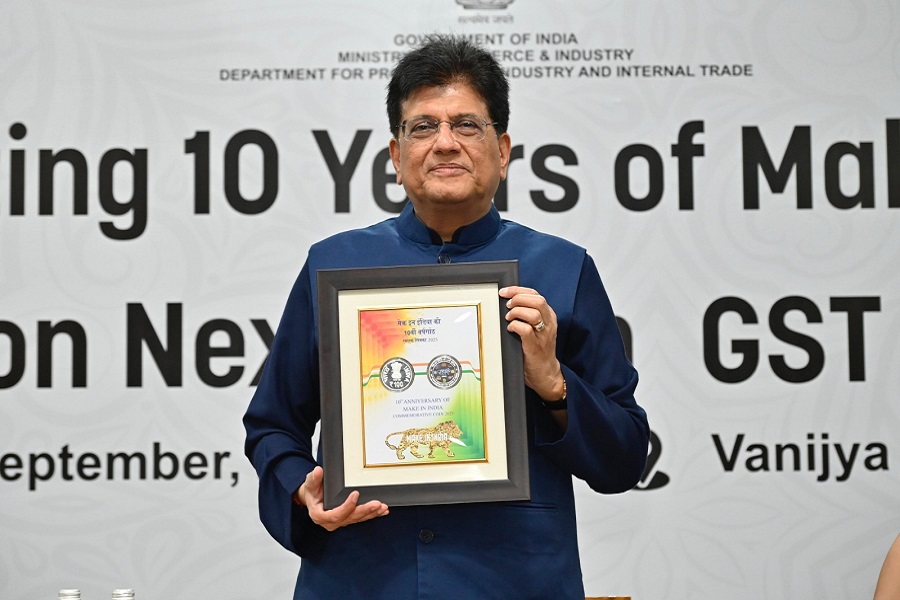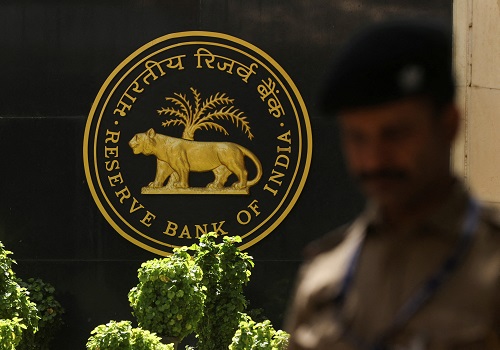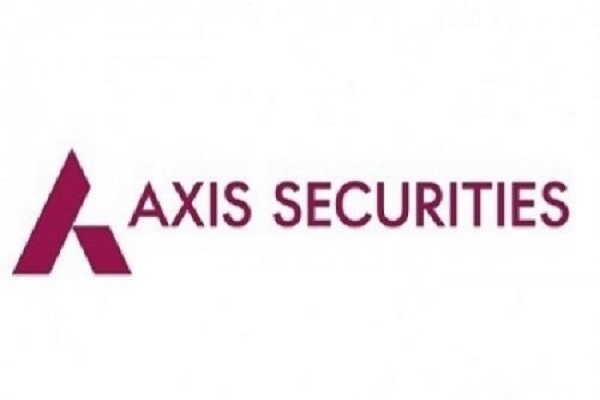Nifty expected to reach 25,816 in the next 12 months : Prabhudas Lilladher

Prabhudas Lilladher (PL), one of the most trusted financial services organisations in India, in its latest India Strategy Report – Hurdles over; ready for a dream run, values NIFTY at 15-year average PE (19.2x) with March 26 EPS of 1344 and arrives at a 12-month target of 25,816 (25,810 based on 19x March 26 EPS of Rs1358 earlier). PL believes a progressive budget, normal monsoons, and strong inflows will further re-rate markets.
Since Prabhudas Lilladher’s last India strategy report which was released on 12th June 2024, NIFTY has delivered a return of 4.4% despite experiencing significant volatility during the Lok Sabha elections.
Prabhudas Lilladher anticipates that the NDA government will sustain its focus on capital expenditure-driven growth, particularly in sectors such as production linked incentives (PLI), infrastructure development, including roads, ports, aviation, defence, railways, and green energy. This expectation is supported by a 20 bps reduction in the fiscal deficit for FY24, normal monsoon forecasts, and an anticipated dividend of Rs. 2.1 trn from the RBI. PL expects the NDA govt. to increase focus on farmers, rural, urban poor and middle class to arrest the impact of new social engineering cum freebies led reversal in certain states in recent elections.

In FY24, India experienced a 6% deficit in rainfall leading to a significant decrease of 10.8% in Rabi crop output and a 1% decline in Kharif crop output. Despite the agricultural sector's contribution to GDP falling below 20%, the repercussions on inflation, rural incomes, and overall economic sentiment remains considerable.

Economy in fine fettle; FY25 GDP (E) at 7.2%
According to the actual numbers of FY24, the fiscal deficit stands at 5.6% which is better than the estimated 5.8%. Revenue receipts have been strong, showing double-digit growth in net tax revenues. PL believes the lower fiscal deficit and Rs 2.1 trillion dividend from the RBI have provided the government with sufficient cushion for both growth and populism. The company also expects to see some impact of recent elections in allocation in various segments and some relief for middle class.
Modi 3.0 – Growth focus, but populism likely too
The NDA has assumed government following the general elections garnering support from approximately 300 MPs out of 543.With BJP securing 240 seats independently, India finds itself once again in a scenario where a single party lacks a majority. India witnessed growth during a 25-year period when no single party had held a majority yet the efficacy of decision-making and collaboration with allies remains untested in Modi 3.0.
Infra push to sustain
With an aim of propelling India’s advancement towards gaining the developed status, there's an anticipation for a steadfast emphasis on infrastructure development spanning roads, ports, metros, airports, railways, power, and more. Sectors such as green energy, hydrogen, electric vehicles, data centers, defence, and production linked incentives (PLI) are poised to attract heightened investments and attention.
Expect increased focus on Rural India and farm sector reforms
The government has faced negative perceptions due to the farm laws and agitation regarding the MSP guarantee, GST on diesel, and higher farm gate prices. While guaranteeing the MSP is considered economically unfeasible, the company anticipates a greater emphasis on offering higher crop prices and promoting crop diversification. Additionally, PL expects increased incentives for rural India and the lower-income segment through existing flagship schemes such as Ujjwala, PM Awas, Nal se Jal, and Ayushman Bharat.
Banks: Overweight: PL is increasing its overweight position on banks by 50 basis points due to strong credit growth and robust asset quality. Major private banks are trading at multiyear low price-to-book ratios, presenting a favourable risk-reward scenario. PL has slightly increased their weighting in HDFC Bank, where the incremental loan-to-deposit ratio is around 80-82%. Sustained growth in this area is expected to enhance valuations from their current low levels.
Healthcare: Overweight: PL is maintaining their overweight position in healthcare by 240 basis points, as generic pharma players are set to benefit from favourable API prices and stable US pricing, while domestic growth remains strong. PL is reallocating some weight from Cipla to Sun Pharma due to better growth prospects. The company remains positive on hospitals, particularly Max Healthcare with a significant overweight position. This optimism is driven by an expected increase in bed capacity through acquisitions and brownfield expansion in Mumbai and NCR, alongside sustained above-teen growth with minimal current capacity addition.
Consumer: Overweight trade has played out: Since its previous note, PL has increased weight in the consumer sector by 300 basis points which has proven effective amidst election volatility and the anticipated rise in both urban and rural demand. PL is now reducing their weight in HUL and Titan by 50 basis points each. While Titan remains a strong proxy for urban consumption, uncertainty in jewellery demand due to rising gold prices, a weak marriage season in the first half of FY25, and margin pressure are expected to cause near-term underperformance. However, given the strong outlook in tourism, PL is increasing their weight in InterGlobe Aviation by 20 basis points.
Automobiles: Overweight: In their previous note, PL had switched to an overweight stance on the Auto sector, and continues to maintain this position. The company anticipates that normal monsoon conditions will boost demand for entry-level bikes, benefiting Hero MotoCorp. The company also expects that sustained momentum and margin improvements in Mahindra & Mahindra's (M&M) Auto division, along with a projected resurgence in Tractor growth augurs well for M&M in the medium term. Additionally, Maruti stands to gain from any potential reduction in duties on hybrid cars.
Focus back to economy, monsoons key trigger
The Nifty has demonstrated consolidation with a 4.4% up move over the past two months despite significant market volatility during the elections. This period also saw strong domestic institutional investor (DII) inflows of Rs 892 billion and foreign institutional investor (FII) outflows of Rs 449 billion. The economy remains robust with an 8.2% GDP growth forecast for FY24, a Rs 2.1 trillion dividend from the RBI and a smooth start to the monsoon season. The RBI has kept policy rates unchanged amid inflation concerns, while the ECB and several other countries have begun announcing rate cuts.
The realty, auto, metals, healthcare, and capital goods sectors have been among the top performers. Hopes for normal monsoons and a shift towards defensive stocks in the current volatile environment have led to a resurgence in FMCG and consumer durables. However, private banks and IT services continue to underperform.
The BSE small cap and mid cap indices have surged by 57% and 61%, respectively, over the past 12 months—more than twice the gains seen in the Sensex, Nifty, and BSE 100. The recent two-month rally in mid and small caps reflects strong market confidence in the economy and demonstrates a robust market breadth.
Above views are of the author and not of the website kindly read disclaimer






















